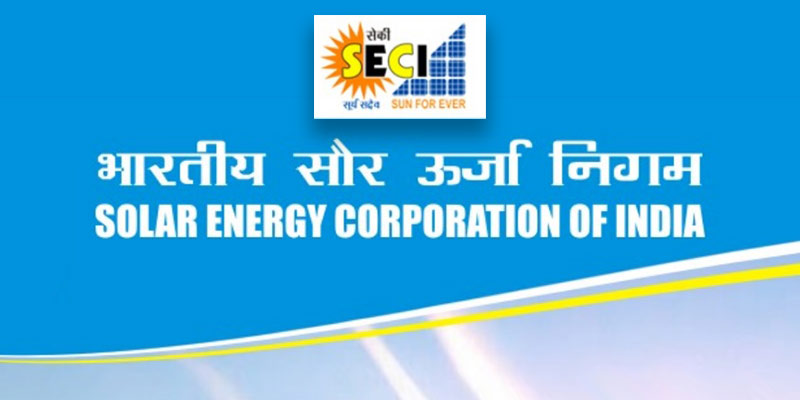- India
- Apr 13
Solar Energy Corporation of India gets Miniratna Category-I status
Solar Energy Corporation of India Ltd (SECI) has been accorded the status of Miniratna Category-I Central Public Sector Enterprise (CPSE).
Solar Energy Corporation of India
• Solar Energy Corporation of India (SECI) is a central public sector undertaking (CPSU) under the administrative control of the ministry of new and renewable energy (MNRE), set up on September 20, 2011.
• The company was set up as an implementing and executing arm of the Jawaharlal Nehru National Solar Mission (JNNSM) for development, promotion and commercialisation of solar energy technologies in the country.
• Through an amendment by the government, the company has been converted into a Section-3 company, in 2015, under the Companies Act, 2013.
• In 2015, the mandate of the company was broadened to cover all segments of renewable energy, pursuant to the approval of the government.
• SECI is engaged in promotion and development of various renewable energy resources, especially solar energy, trading of power, R&D, etc.
• Till date, SECI has awarded renewable energy project capacities of over 56 GW.
SECI is the implementing agency of MNRE for:
i) Promotion of solar projects under the National Solar Mission (NSM).
ii) Setting up of grid-connected rooftop solar projects in the country.
iii) Promotion of floating solar technology as an alternative to land based solar projects in areas with constraints on land availability/usage.
iv) Promotion of large-scale wind power projects in the country.
v) Promotion of innovative projects like solar-wind hybrid projects.
vi) The scheme for development of solar parks, for providing infrastructural support, such as developing the land and power evacuation facilities, to solar project developers.
What is Maharatna, Navratna and Miniratna status?
Under Articles of Association, the board of directors of Central Public Sector Enterprises (CPSEs) enjoys autonomy in respect of recruitment, promotion and other service conditions of below board level employees.
The board of directors of a CPSE exercises delegated powers subject to broad policy guidelines issued by the government from time to time.
The government has granted enhanced powers to the Boards of the profit-making enterprises under various schemes like Maharatna, Navratna and Miniratna.
Maharatna scheme
• The main objective of the Maharatna scheme which was introduced in 2010 is to empower mega CPSEs to expand their operations and emerge as global giants.
• Maharatna CPSEs compared to others are given greater autonomy for flexibility in respect of capital expenditure, formation of strategic alliance, formulation of HR policies etc.
• The Board of a Maharatna CPSE can make equity investments to undertake financial joint ventures and wholly-owned subsidiaries and undertake mergers and acquisitions in India and abroad, subject to a ceiling of 15 per cent of the networth of the concerned CPSE, limited to Rs 5,000 crore in one project.
• The board can also structure and implement schemes relating to personnel and human resource management and training. They can also enter into technology joint ventures or other strategic alliances.
Eligibility criteria for grant of Maharatna status
The CPSEs meeting the following eligibility criteria are considered for Maharatna status:
a) Having Navratna status.
b) Listed on Indian stock exchange with minimum prescribed public shareholding under SEBI regulations.
c) An average annual turnover of more than Rs 25,000 crore during the last three years.
d) An average annual net worth of more than Rs 15,000 crore during the last three years.
e) An average annual net profit after tax of more than Rs 5,000 crore during the last three years.
f) Should have significant global presence/international operations.
The Maharatna CPSEs are:
1) Bharat Heavy Electricals Limited
2) Bharat Petroleum Corporation Limited
3) Coal India Limited
4) GAIL India Limited
5) Hindustan Petroleum Corporation Limited
6) Indian Oil Corporation Limited
7) NTPC Limited
8) Oil & Natural Gas Corporation Limited
9) Power Grid Corporation of India Limited
10) Steel Authority of India Limited
11) Power Finance Corporation Limited (PFC).
12) REC Limited.
Navratna scheme
The government introduced the Navratna scheme in 1997.
Under this scheme, the Boards of Navratna CPSEs have been delegated enhanced powers in the areas of:
i) Capital expenditure
ii) Investment in joint ventures/subsidiaries
iii) Mergers & acquisitions
iv) Human resources management, etc.
Eligibility criteria for grant of Navratna status
The CPSEs which are Miniratna I, Schedule ‘A’ and have obtained ‘excellent’ or ‘very good’ MOU rating in three of the last five years and have a ‘Composite Score’ of performance to be 60 or above in six identified performance parameters are eligible to be considered for grant of Navratna status.
The parameters are:
1) Net Profit to Net worth
2) Manpower Cost to total Cost of Production or Cost of Services
3) Profit Before Depreciation, Interest and Tax (PBDIT) to Capital Employed
4) Profit Before Interest and Tax (PBIT) to Turnover
5) Earning Per Share
6) Inter Sectoral Performance.
Navratna CPSEs are:
1) Bharat Electronics Limited
2) Container Corporation of India Limited
3) Engineers India Limited
4) Hindustan Aeronautics Limited
5) Mahanagar Telephone Nigam Limited
6) National Aluminium Company Limited
7) National Buildings Construction Corporation Limited
8) Neyveli Lignite Corporation Limited
9) NMDC Limited
10) Oil India Limited
11) Rashtriya Ispat Nigam Limited
12) Shipping Corporation of India Limited.
Miniratna scheme
• In October 1997, the government decided to grant enhanced autonomy and delegation of financial powers to some other profit making companies subject to certain eligibility conditions and guidelines to make them efficient and competitive.
• These companies, called Miniratnas, are in two categories, namely, Category- I and Category-II.
• Category-I CPSEs should have made profit in the last three years continuously, the pre-tax profit should have been Rs 30 crore or more in at least one of the three years and should have a positive net worth.
• Category-II CPSEs should have made profit for the last three years continuously and should have a positive net worth.
Manorama Yearbook app is now available on Google Play Store and iOS App Store

